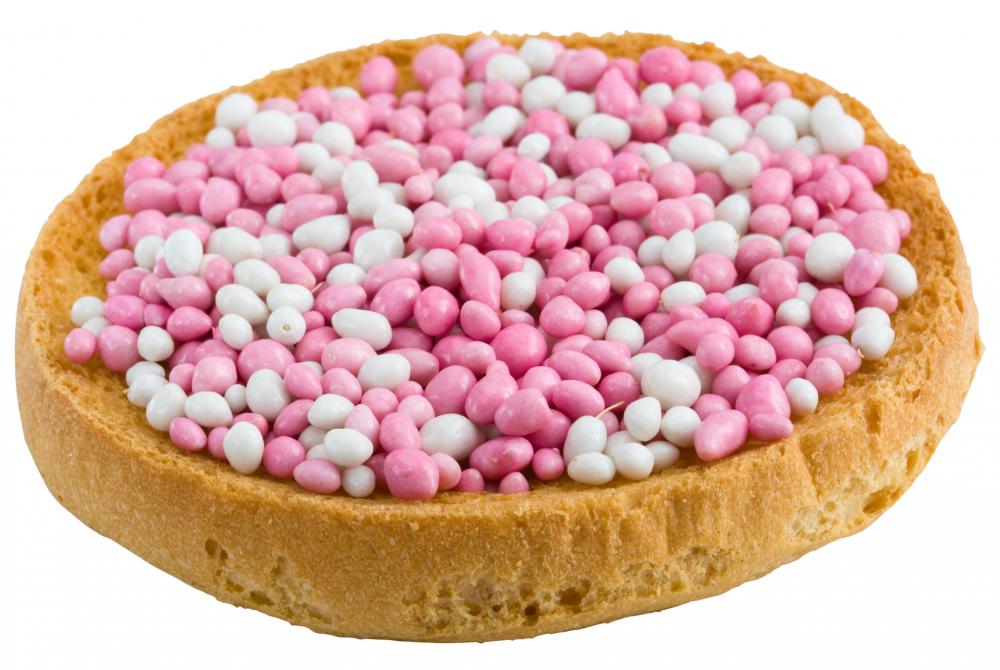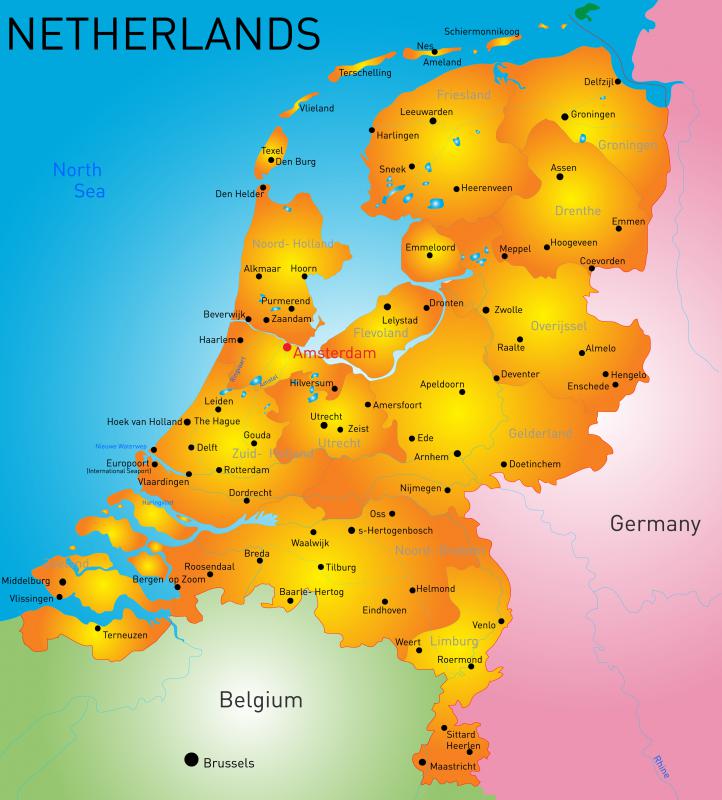At WiseGEEK, we're committed to delivering accurate, trustworthy information. Our expert-authored content is rigorously fact-checked and sourced from credible authorities. Discover how we uphold the highest standards in providing you with reliable knowledge.
What Are Muisjes?
Muisjes are a Dutch sandwich topping made primarily of aniseed and sugar. The sweet sprinkles or tiny candy drops are eaten on top of bread. They are also sometimes eaten on a beschuit, a type of Dutch biscuit. In order to prevent them from falling off, butter or margarine is spread on the bread or toast before they are sprinkled.
The sweet sprinkles are traditionally served and eaten to celebrate the birth of a new born baby. This tradition has been in practice since the 17th century, and most likely developed because it was proper during that time to give a mother aniseed to stimulate her first milk. As time went on, colored variations became available.

Prior to the 20th century, muisjes were white and were given to visitors of the newborn baby. Early in the 20th century, however, pink variations were introduced, and visitors were given a mixture of pink and white. Shortly thereafter, blue was introduced as well. Most visitors of newborn boys are now given a mixture of blue and white, and visitors to newborn girls a mixture of pink and white.

Very rarely, orange muisjes are produced and eaten around the time of the birth of a member of the royal family in The Netherlands. Orange is the color of the royal family, relating back to William of Orange, and thus it is with a sense of pride that the Dutch embrace all things orange. Sprinkles of this special variation were produced in 1938 to honor the birth of Queen Beatrix, and again in 2003 when crown princess Catherina-Amalia was born.

A period of a new birth is not the only time that they can be eaten. Gestampte, or crushed, muisjes are essentially powdered muisjes. The crushed version is also sprinkled onto a buttered slice of bread or beschuit, and is eaten for breakfast year round. Beschuit, a twice-baked, crispy Dutch variation of rusk, is most famously served with muisjes, but is also eaten with other toppings, such as cheese or strawberries.
Haglslag, from the word hagel, meaning hail, is another form of Dutch sprinkles that can easily be confused with muisjes. They come in many flavors and colors, and are a favorite among the Dutch at breakfast time. When eating hagelslag, bread is topped first with butter or margarine and then sprinkled with hagelslag for a sweet breakfast bread.
An alternative tradition occurs in Belgium and some parts of The Netherlands. When celebrating a birth or a baptism, suikerbonen, or sugar beans, are served. They come in a variety of colors and also contain chocolate.
AS FEATURED ON:
AS FEATURED ON:













Discuss this Article
Post your comments